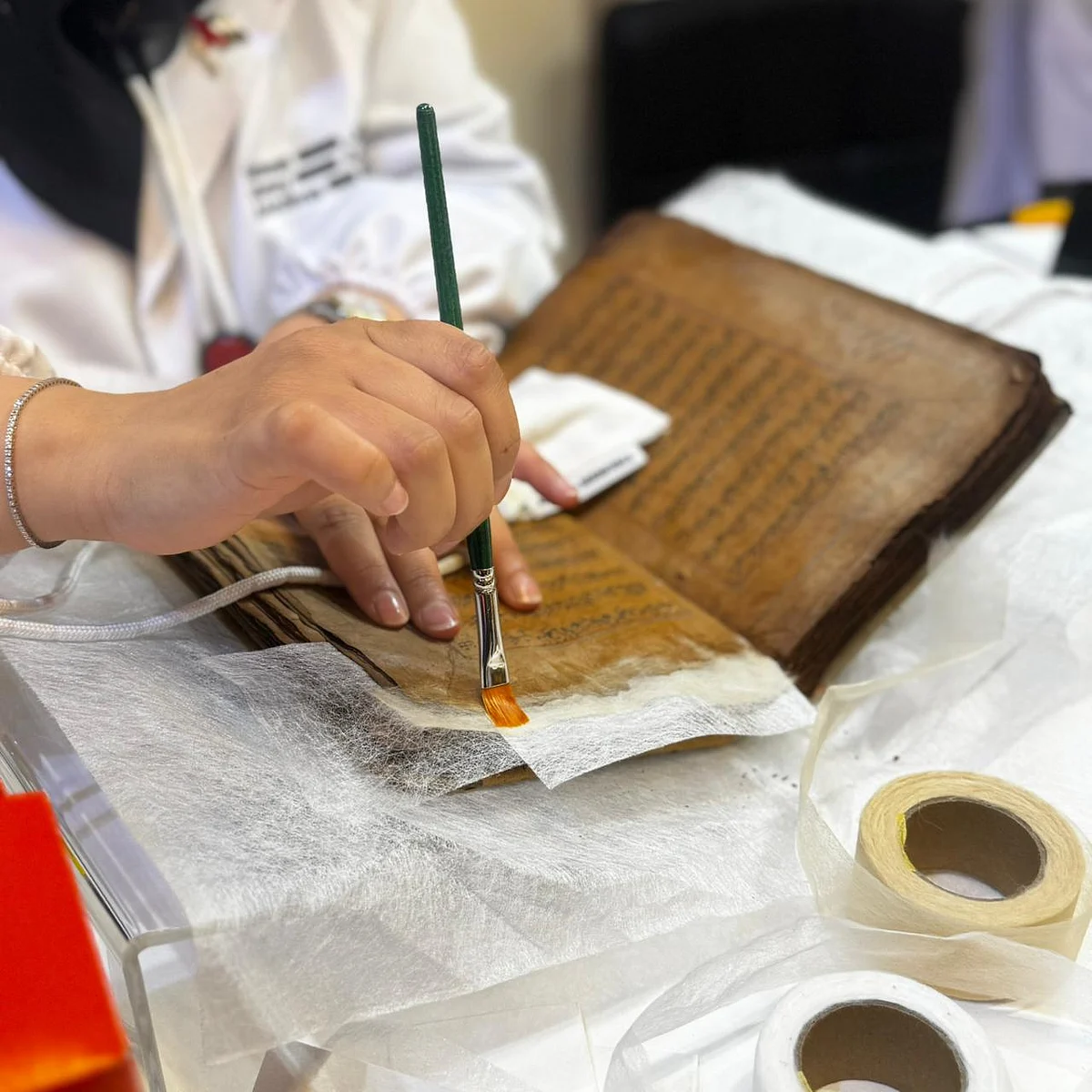
Look: UAE Experts Bring Centuries-Old Quran Back To Life At Sharjah Book Fair
Have you ever seen a centuries-old book - eaten by insects, torn, full of holes, and with brittle pages - brought back to life? Now, visitors to the Sharjah International Book Fair (SIBF) have the chance to witness this rare process live. Experts from the UAE National Archives are carefully restoring ancient manuscripts, including a centuries-old copy of the Holy Quran.
Inside the archive's restoration booth, every movement is deliberate and precise. Wearing gloves and magnifying lenses, book conservators work under bright lamps, surrounded by brushes, fine tweezers, and sheets of delicate Japanese paper.“We are not rewriting history; we are preserving it,” said a senior book restorer at the UAE National Library and Archives booth.“Every torn edge and every fragile word must be treated with care.”
Recommended For YouGently lifting a page that seems on the verge of crumbling, the restorer shared,“This Quran was written hundreds of years ago. Some pages are missing, others have holes, and the ink has faded (over time). We use natural glues and very fine Japanese tissue to support the paper from beneath. It's almost invisible, but it gives the page new strength.”
Stay up to date with the latest news. Follow KT on WhatsApp Channels.
To flatten warped pages, conservators use a small heating tool that blows controlled warm air, and a small iron-line device.“It's like giving the page a gentle breath,” said the restorer.“Too much heat or moisture can destroy it, so every second counts.”
Once cleaned and repaired, pages are left to dry under special sheets that prevent curling.“We never try to complete missing words or rewrite anything,” she added. "That would take away its originality and value. Our work stops where the paper ends.”
How long does the process take?Depending on the extent of the damage, the restoration process can take days or even weeks. Starch-based natural adhesives bond the Japanese tissue to the fragile paper, reinforcing it to prevent further tearing.“We use materials that last for decades but can be safely removed if necessary,” explained the restorer.
For many visitors, it's a moment of awe, watching the transformation of something so fragile into something that will live longer.
“When I touch these pages, I feel connected to the person who wrote them hundreds of years ago. Every mark has a story. We don't just restore books, we restore memories.”
At the end of the process, the restored Quran won't be rebound or displayed for reading. Instead, it will be safely stored in a temperature-controlled archive.“After restoration, it becomes invaluable. It's no longer just a book, it's a piece of history.”
She emphasised that their work focuses solely on preserving the pages - and bringing them back to life - not altering the words.“We never touch or rewrite the original script. The moment anyone rewrites even a single letter, the book loses its historical value,” she said.
“Our goal is not to make it look new, but to make sure it survives. The stains, the faded ink, the torn edges all tell a story. We preserve those signs of age because that's what makes the book priceless," she added.
For visitors at SIBF, this live restoration corner offers more than just a glimpse of craftsmanship, it's a learning session on how the UAE preserves the written heritage of the Islamic world.

Legal Disclaimer:
MENAFN provides the
information “as is” without warranty of any kind. We do not accept
any responsibility or liability for the accuracy, content, images,
videos, licenses, completeness, legality, or reliability of the information
contained in this article. If you have any complaints or copyright
issues related to this article, kindly contact the provider above.


















Comments
No comment